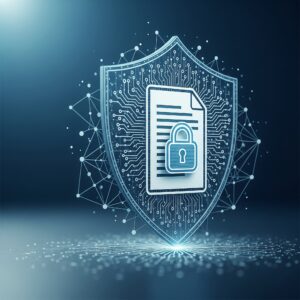Introduction
As regulatory requirements evolve and cyber threats increase, organizations can no longer rely on periodic compliance checks. Instead, they need Continuous Compliance Monitoring (CCM)—a real-time, automated approach to ensuring compliance with regulations, security policies, and industry standards.
CCM helps businesses detect violations early, reduce compliance risks, and improve operational efficiency. This guide outlines how to implement continuous compliance monitoring effectively in your organization.
Understand the Need for Continuous Compliance Monitoring
Why It Matters
Traditional compliance methods rely on annual audits and manual reviews, which are slow and reactive. CCM provides real-time tracking, automation, and immediate alerts for compliance issues.
Key Benefits of CCM
Reduces risk exposure – Identifies compliance violations before they escalate.
Enhances efficiency – Automates compliance checks, reducing manual efforts.
Improves security – Detects cyber threats and data breaches instantly.
Ensures regulatory readiness – Keeps businesses always audit-ready.
Example
A financial institution uses CCM to continuously monitor transactions for AML compliance, instantly detecting suspicious activities.
Identify Applicable Compliance Frameworks and Regulations
Why It Matters
CCM must align with your industry’s specific regulations and compliance standards to be effective.
Common Compliance Standards
GDPR (General Data Protection Regulation) – Data privacy in the EU.
HIPAA (Health Insurance Portability and Accountability Act) – Healthcare data protection.
SOC 2 (Service Organization Control 2) – Cloud security compliance.
ISO 27001 – Information security management system (ISMS).
PCI DSS (Payment Card Industry Data Security Standard) – Secure credit card transactions.
How to Apply It
Map your organization’s compliance requirements based on industry and geography.
Use regulatory intelligence tools to track updates and changes.
Ensure CCM integrates with all applicable standards to avoid gaps.
Implement Automated Compliance Monitoring Tools
Why It Matters
Manual compliance tracking is slow and error-prone. AI-powered compliance tools can automate policy enforcement, monitoring, and risk detection.
Best Compliance Automation Tools
SIEM (Security Information and Event Management) Systems – Detect security threats in real time (e.g., Splunk, IBM QRadar).
RegTech Solutions – Automate regulatory compliance tracking (e.g., LogicGate, OneTrust, Vanta).
Continuous Auditing Tools – Automate compliance audits and reporting (e.g., AuditBoard, MetricStream).
Cloud Security Posture Management (CSPM) – Monitors cloud compliance (e.g., Prisma Cloud, Wiz).
How to Apply It
Select compliance monitoring tools that align with your industry regulations.
Integrate these tools with IT systems for real-time visibility.
Automate compliance reporting to simplify audits and risk assessments.
Establish Real-Time Alerts and Incident Response Mechanisms
Why It Matters
Real-time alerts allow organizations to respond to compliance violations immediately, preventing costly fines and security breaches.
Key Steps
Set up automated alerts – Notify compliance teams of policy violations instantly.
Define escalation procedures – Ensure security teams react quickly to compliance incidents.
Use AI-driven anomaly detection – Identify suspicious activities in transactions, user behavior, and system logs.
Example
A retail company receives an instant alert when a third-party vendor accesses sensitive customer data outside of approved policies.
Conduct Regular Compliance Audits and Risk Assessments
Why It Matters
Even with automated monitoring, businesses must audit compliance processes and assess new risks regularly.
Key Actions
Schedule quarterly compliance audits using automation tools.
Perform risk assessments to identify and mitigate potential threats.
Analyze compliance gaps and update policies accordingly.
Example
A healthcare provider conducts HIPAA audits every six months, using AI-powered compliance analytics to detect risks in patient data handling.
Train Employees on Compliance Best Practices
Why It Matters
Even with the best CCM tools, human error remains a major compliance risk. Employee awareness is crucial for compliance success.
How to Apply It
Offer role-specific compliance training (e.g., finance, IT, HR).
Use gamification and interactive learning to improve retention.
Provide real-time compliance guidance using AI-powered chatbots.
Example
A banking institution uses AI-driven phishing simulations to train employees on cybersecurity compliance.
Ensure Continuous Improvement and Adaptation
Why It Matters
Regulations, threats, and business operations constantly evolve. Organizations must regularly update compliance policies and monitoring frameworks.
How to Apply It
Monitor regulatory changes and adjust CCM settings accordingly.
Continuously improve AI and automation models based on compliance findings.
Engage with compliance communities to stay ahead of emerging trends.
Example
A cloud service provider updates its SOC 2 and ISO 27001 policies annually to reflect changes in cybersecurity best practices.
Align Continuous Compliance Monitoring with Business Strategy
Why It Matters
Compliance should not be a separate function but rather integrated into business operations and strategy.
How to Apply It
Align compliance monitoring with business goals (e.g., global expansion, cloud migration).
Use compliance metrics to drive decision-making.
Showcase compliance as a competitive advantage to clients and investors.
Example
A SaaS company markets its GDPR and SOC 2 compliance as a trust factor for enterprise customers.
Conclusion
Implementing Continuous Compliance Monitoring (CCM) helps organizations maintain real-time regulatory compliance, reduce risks, and improve efficiency. By leveraging AI, automation, and proactive risk management, businesses can stay audit-ready and avoid costly penalties.
Key Takeaways:
Automate compliance tracking to reduce manual efforts and errors.
Use real-time alerts to detect and respond to compliance violations.
Perform regular risk assessments and audits to ensure continuous improvement.
Train employees on compliance best practices to minimize human error.
Align compliance efforts with business strategy to gain a competitive edge.







